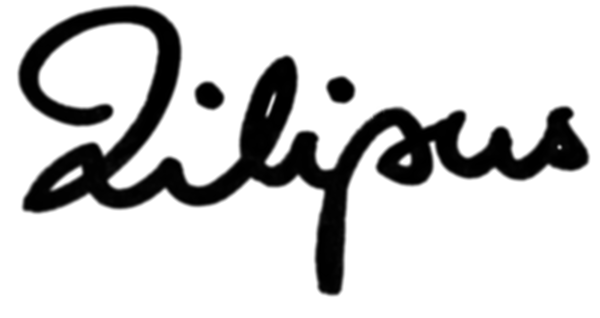LEICA DIGILUX 2 RAW ISO COMPARISON – CONCLUSION
ISO100 vs. ISO200 vs. ISO400
ISO100 is remarkably noise-free. At ISO200 the noise is of a finer character, not entirely dissimilar from the grain of ISO400 slide film. At ISO400 the noise takes on a coarser character. Still, even at ISO400 details are preserved fairly well.
ISO400 or EI400?
While ISO400 is noisy, under-exposing ISO100 two stops to shoot at EI400 gives an even noisier image with coarser, more contrasty noise. ISO200/EI400 yields a cleaner image than ISO100/EI400, however it is not as good as images shot at ISO400 proper.
EI25 and EI50
The three images shot at sub-100EI all display a certain ‘flatness’ which may be undesirable to some photographers. However, it is quite obvious that this flatness is due to the almost complete absence of noise. ISO100/EI25 is particularly clean. Of the two EI50 images, the one shot at ISO200 is the cleanest, perhaps a surprising result given that the image was pulled one stop more than the one shot at ISO100. The difference is, however, marginal. In real-world applications, the fact that the sensor’s pixels saturate quickly means that the practical use of EI25 and EI50 is rather limited; most images will be severely over-exposed. That said, they may be of use, for instance, for still life under controlled lighting conditions. Naturally, it should be remembered that the Digilux 2′s performance at ISO100 is, by no means, inadequate.
EI800 and EI1600
In images shot at these high EIs, noise increases even further which is to be expected from sensor technology a decade old. Without reaching the significant noise of EI1600, images shot at ISO200/EI800 contain noise which is more contrasty and appears rougher than the noise in ISO400/EI800 images. Naturally, there may be situations where it is necessary to push the Digilux 2 to its absolute limit in order to be able to take a picture – more on that below – but as a general piece of advice for colour photography ISO400/EI800 is to be preferred to EI1600.
Nevertheless, high ISO/EI noise may be reduced quite successfully in post-processing. As an example, below the ISO400/EI1600 crop was adjusted using the colour noise reduction feature in Adobe Camera Raw. The image can certainly be tweaked more, but even without further processing, and the noise/grain notwithstanding, the image retains detail well. Click on the below image for the full ISO400/EI1600 image with noise reduction applied.
RAW black and white photography
The Digilux 2 is able to capture very beautiful black and white JPEGs at ISO100, but as of ISO200 the noise reduction algorithms begin to eat into the image quality and RAW is advisable. As a tool for RAW black and white photography, though, the Digilux 2 is surprisingly capable throughout its ISO/EI range. The grainy character of its high-ISO/EI noise will appeal to many photographers. It is possible to use this camera at EI800 and EI1600 much like one would use the venerable and sadly discontinued Fuji Neopan 1600.
Summing up
Noise is rarely desirable in a digital photograph; it is the one aspect of digital photography that camera manufacturers spend millions on in R&D to counter-act. The popular resulting expectation is that digital photographs are expected to be ‘clean’, free from noise so that they correspond as closely as possible to reality as our eyes perceive it.
Any photographer used to seeing reality through film, with all its benefits and flaws, will likely not mind noise to the same degree as photographers used solely to digital photography. Film photographers expect an increasing amount of grain at higher ISOs, the amount only depending on the film used, and would likely also welcome it as a means to further their artistic expression. For such photographers, the Digilux 2′s noise may not be an irritation.
At ISO100, the Digilux 2 delivers very clean images, both as JPEG and RAW. A digital photographer with low acceptance of noise will, therefore, be disappointed by the camera’s image quality as soon as he ventures beyond ISO100. However, for photographers who find grain to be a relevant part of the photographic expression, the Digilux 2 offers very good image quality also above ISO100. I say “very good” because, as noted at the outset, a part-purpose of this test is to consider the camera’s performance with film photography in mind. Since the noise produced by the Digilux 2′s RAW images has a grain-like character, the camera can readily be used as a black and white camera to create beautiful images also at high ISO/EI.
With the recent release of the Leica M Monochrom there is a lot of discussion about digital black and white photography. Naturally the Digilux 2 is not able to compete with the M Monochrom. Nevertheless, as a digital camera capable of capturing alluring, grainy images at high ISO/EI, the Digilux 2 does have a place as a useful and above all satisfying camera for black and white photography. Moreover, it does have a role to play at lower sensitivities as well, where its magnificent Summicron lens is able to capture quite remarkable photographs. The absence of RAW buffer does make the camera slow to operate, that much is certain. Provided one accepts that – and any other flaws one feels that the camera has – the Digilux 2 can be used many other settings than one might expect and with quite satisfying results.
Digilux 2 reviews
Phil Askey | DPreview.com (2004)
Sean Reid | Luminous Landscape (2004)
Digital Journalist | Bill Pierce (2004)
C.Garrard | Photographic Central (2011)
Photography Review.com | User reviews
Digilux 2 resources
Leica Camera Downloads | Digilux 2
Leica Camera Forum | Do Digilux 2 photos have a distinctive look? Photo thread
Leica Camera Forum | How to find out the shutter count on a Digilux 2





